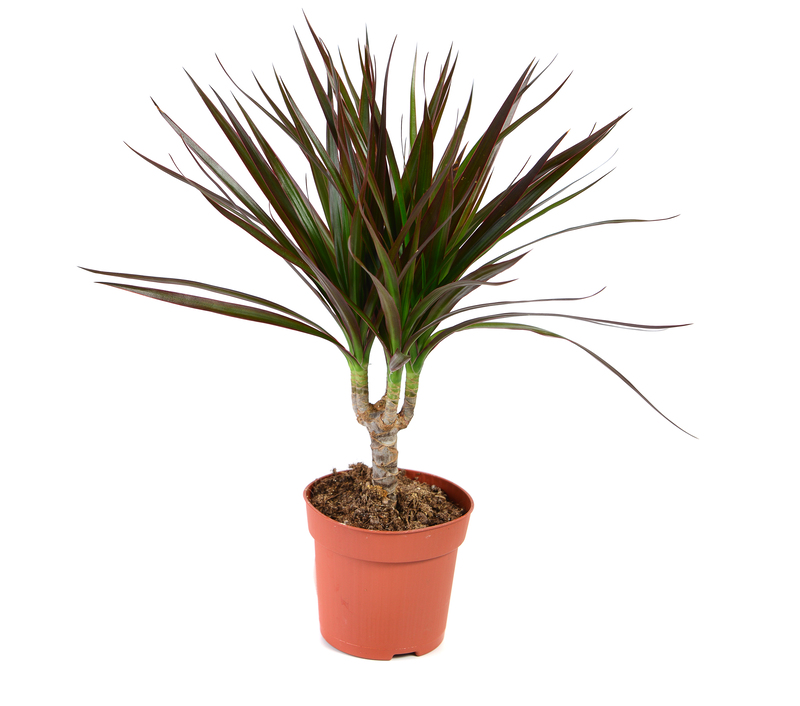Urban spaces transformed with vertical gardening
Posted on 07/09/2025
Urban Spaces Transformed with Vertical Gardening
Vertical gardening has rapidly become a revolutionary solution for urban environments seeking to enhance green spaces, improve air quality, and maximize limited land. As cities continue to expand and available green areas shrink, city planners, architects, and residents are embracing the idea of integrating gardens vertically. This article explores how urban spaces are being transformed through various forms of vertical gardens, details the benefits and challenges, and offers insightful guidance on how to get started with your own urban vertical garden.

Why Vertical Gardening Is the Future of Urban Green Spaces
Urban development often leads to concrete-dominated environments and reduced green spaces. As a result, the need for innovative green solutions is greater than ever. Vertical gardening offers a sustainable pathway to restore ecological balance, beautify cityscapes, and improve *urban quality of life.*
- Maximizes use of limited space
- Improves air quality by filtering pollutants
- Reduces urban heat island effect
- Enhances aesthetic appeal of buildings and streets
- Promotes urban biodiversity
- Boosts residents' mental well-being
The Rise of Urban Vertical Gardens
Cities across the globe are adopting urban vertical gardening solutions to create more livable, sustainable environments. Innovative examples can be found in cities such as Singapore, Paris, New York, and Sydney, where high-rise buildings and public structures serve as living canvases for lush, green vertical installations. These installations range from small balcony gardens to massive living walls, also known as green walls, that climb up the sides of entire buildings.
Types of Vertical Gardens for Urban Spaces
The application of vertical gardening in urban spaces comes in various forms, each with its own advantages and visual impact.
1. Living Walls (Green Walls)
Living walls are freestanding or attached panels covered with vegetation. They incorporate a growing medium and are often equipped with automated irrigation systems. Living walls can be found both indoors and outdoors, serving to improve air quality, insulate buildings, and add dramatic beauty to public places.
2. Vertical Planters and Trellises
These are modular structures attached to walls, balconies, or fences, supporting climbing plants or planters. Vertical planters are particularly popular in urban residential spaces for their simplicity and flexibility, allowing even the smallest areas to benefit from lush greenery.
3. Green Facades
A green facade is created by training climbing plants directly onto a building's surface or on special support structures. Over time, facades can be fully covered, providing natural insulation, habitat for wildlife, and a unique green aesthetic.
4. Urban Farms and Edible Walls
Edible walls integrate vertical gardening principles with urban agriculture. These gardens maximize the yield of limited space, enabling city dwellers to grow herbs, vegetables, and even fruits on rooftops, balconies, and alleyways.
The Transformative Benefits of Vertical Gardening in the Urban Landscape
Environmental Impact
Perhaps the most significant impact of vertical gardens for cities is environmental. Vertical gardens provide oxygen, trap dust, and absorb pollutants, thus significantly improving urban air quality. Green walls also help in moderating the urban climate, reducing the urban heat island effect by providing shade and cooling through evapotranspiration.
Social and Psychological Benefits
Access to green spaces has been linked to improved mental health, reduced stress levels, and enhanced productivity. By incorporating vertical gardens into office buildings, schools, hospitals, and residential complexes, urban planners offer city dwellers better opportunities for relaxation, recreation, and socialization.
Economic Advantages
Vertical gardening can also lead to economic savings by reducing building energy costs through improved insulation. Moreover, green buildings often have higher real estate values and attract tenants who prioritize sustainability and environmental responsibility.
Biodiversity and Urban Wildlife
Urban gardening isn't just for people. Vertical gardens support biodiversity by providing habitat for insects, birds, and pollinators, contributing to a vibrant urban ecosystem.
Real-World Success Stories of Urban Spaces Transformed with Vertical Gardening
Singapore: The Vertical Garden Capital
Singapore has positioned itself as a green city model by embracing vertical gardening at scale. Landmarks like the Oasia Hotel Downtown and Changi Airport showcase living towers covered in thousands of plants, effectively transforming previously bland facades into lush, vibrant habitats. The city-state's initiatives have improved local biodiversity and earned it international recognition as a pioneer in urban sustainability.
Paris: Green Walls for Modern Aesthetics
French botanist Patrick Blanc popularized the concept of indoor and outdoor living walls in Paris. Iconic buildings such as the Musee du Quai Branly display massive plant-covered walls, integrating nature into modern architecture and mitigating air and noise pollution in the bustling city center.
New York City: Urban Farming Goes Vertical
New York's trend toward urban farming includes innovative use of rooftops and abandoned lots transformed into vertical farms. Organizations like Brooklyn Grange cultivate hundreds of varieties of crops on rooftops and in vertical planter systems, providing fresh produce directly to urban communities.
Key Elements of a Successful Urban Vertical Gardening Project
1. Choosing the Right Location
Access to sunlight, accessibility for maintenance, and structural integrity of the wall or support system are crucial considerations. South-facing walls often provide the ideal amount of sunlight for most plant species used in vertical gardens.
2. Selecting Suitable Plants
Different species have varying light, water, and temperature requirements. Urban gardeners should select plants adapted to the local climate and suited for vertical growth. Ferns, succulents, ivies, air plants, and certain edible herbs are popular choices.
3. Structural Support and Growing Medium
Vertical gardens may require reinforced support structures, especially for heavy green walls. The choice of *growing medium* (soil, hydroponic substrate, felt pockets, etc.) affects water retention, plant health, and weight.
4. Irrigation and Drainage
Efficient irrigation systems prevent overwatering and under-watering. Many successful vertical gardens use automated drip systems to deliver precise amounts of water and nutrients. Proper drainage is also essential to keep plants healthy and prevent damage to building materials.
5. Regular Maintenance and Care
Consistent *pruning, replacing plants,* and checking irrigation ensure the longevity of a vertical urban garden. It is essential to schedule regular maintenance, particularly in public or commercial spaces.
Creative Ideas for Incorporating Vertical Gardening in Urban Environments
- Balcony and Patio Vertical Gardens: Use modular planters or hanging pots to create a mini sanctuary, even in small apartments.
- Public Space Enhancements: Transform bare walls in parks, schools, or transit stations into lush, interactive green areas.
- Business Frontage: Install unique green wall signage or edible plant displays, improving the building's appearance and brand image.
- Parking Lot Screening: Use vertical gardens to block unsightly views, reduce heat, and add visual interest to car parks.
- Community Urban Farming Initiatives: Build edible living walls in community gardens or on disused public land.
Challenges in Vertical Gardening for Urban Spaces
Despite its numerous benefits, urban vertical gardening faces certain challenges. Common obstacles include:
- Initial installation costs, especially for complex or large-scale green walls
- Weight restrictions for building facades and balconies
- Irrigation and drainage complexity, especially in older buildings
- Ongoing maintenance and replacement costs for failed plants
- Limited plant selection for harsh urban climates or shaded environments
However, ongoing innovation in lightweight materials, modular systems, and plant breeding is steadily reducing these barriers, making vertical gardens in urban spaces more accessible than ever before.
How to Start Your Own Urban Vertical Garden
Step-by-Step Guide to Vertical Gardening at Home or in Your Community
- Assess Available Space: Choose a wall, fence, balcony, or even a window with good access to sunlight.
- Plan Your Design: Decide whether you want a decorative, edible, or mixed vertical garden. Sketch the layout and select your preferred system (modular planters, trellis, pocket pouches, etc.).
- Select the Right Plants: Consider light and temperature conditions, prefer low-maintenance species for busy urban lifestyles.
- Install Support Structures: Follow manufacturer recommendations to ensure safety and stability of the installation.
- Set Up Irrigation: Install drip irrigation or ensure manual watering is convenient and consistent.
- Monitor and Maintain: Regularly check plant health, water levels, and make seasonal adjustments.
Pro tip: *Start small!* Experiment with one section of a wall or balcony before scaling up your vertical garden project.

Future Trends: Smart Urban Spaces with Technological Integration
Innovation in urban vertical gardening is keeping pace with smart city technologies. Current and future trends include:
- Integration of smart irrigation systems with sensors to optimize water use
- Use of drought-resistant and air-purifying plant varieties
- Hybrid solar-green wall installations to improve energy efficiency
- Automated maintenance utilizing robotics for large-scale installations
- Community-driven projects fostering environmental stewardship and urban agriculture
As cities aim for carbon neutrality and improved resilience to climate change, vertical gardens will play an ever-increasing role in city planning and design.
Conclusion: Greening the Urban Future with Vertical Gardening
Urban spaces transformed with vertical gardening demonstrate that growing up, not out, is the key to a greener, healthier future. Beyond their aesthetic appeal, vertical gardens support biodiversity, clean our air, inspire innovation, and foster community well-being. Whether in sprawling public parks or petite urban balconies, vertical gardening is reshaping the landscape--turning cities into lively, sustainable, and beautiful ecosystems.
Now is the time to take action: Whether you're a city planner, property manager, business owner, or resident, consider integrating vertical gardens into your space. You can be part of the movement to transform urban environments and create living, breathing cities for generations to come.

